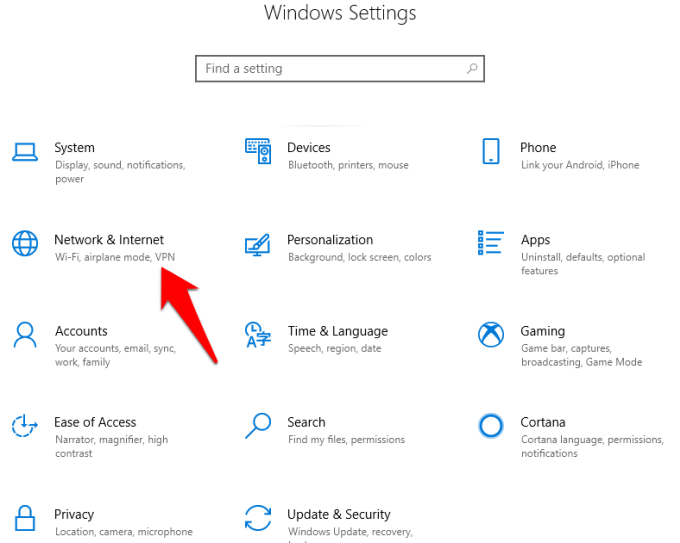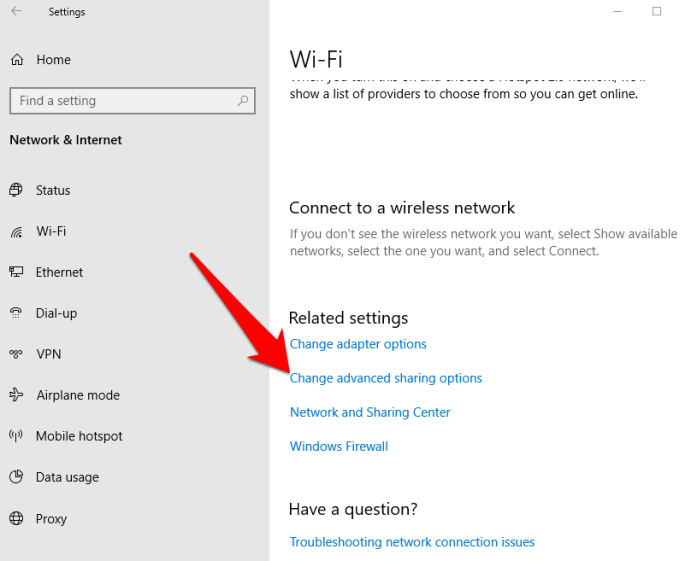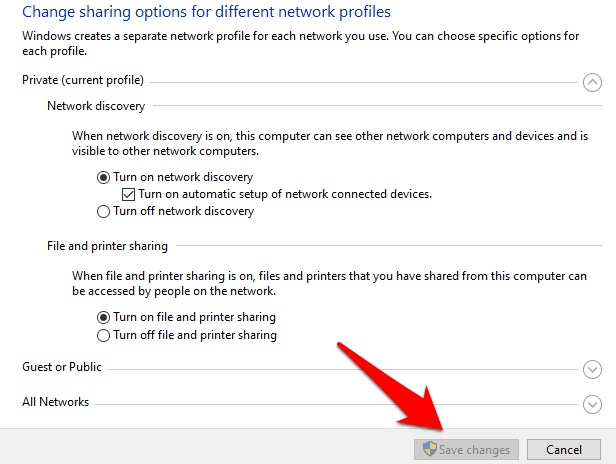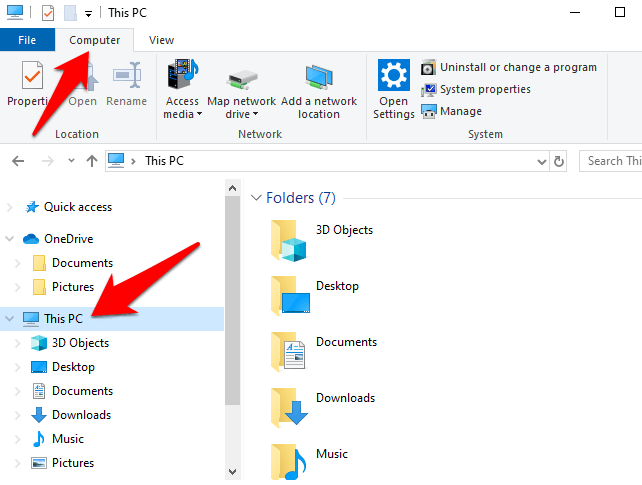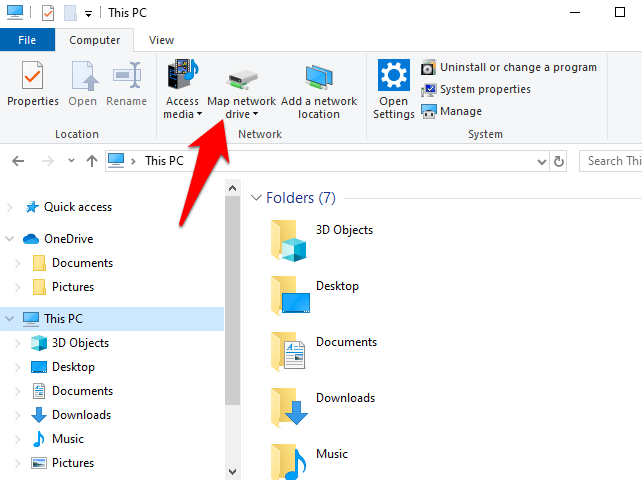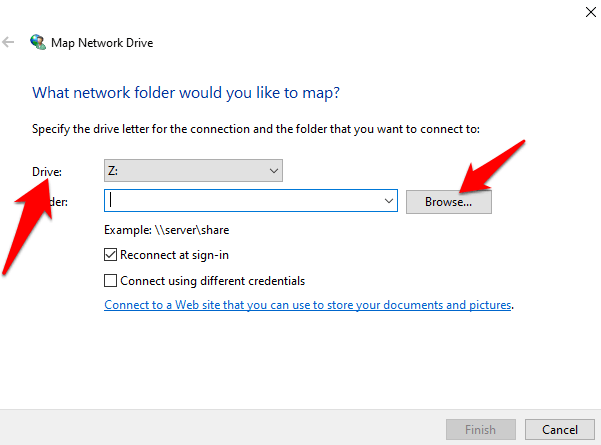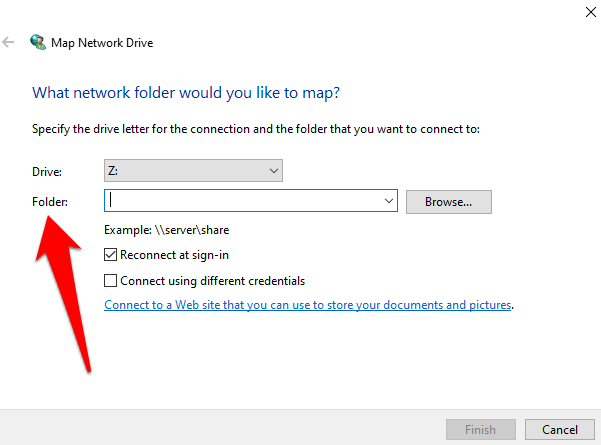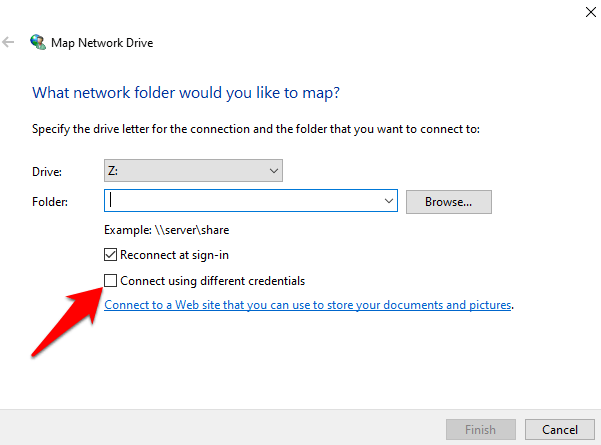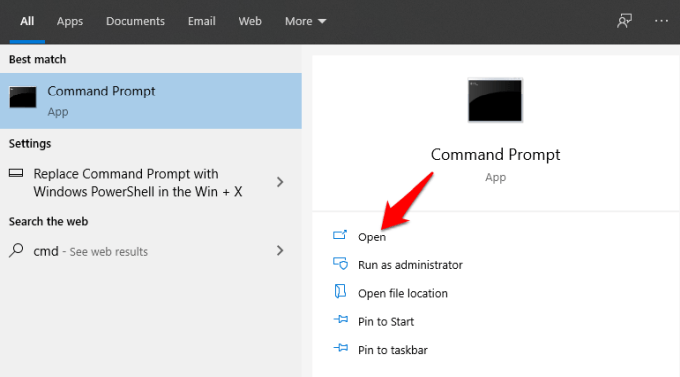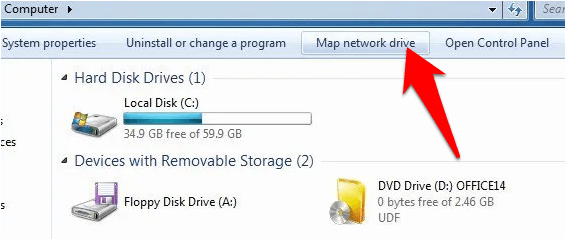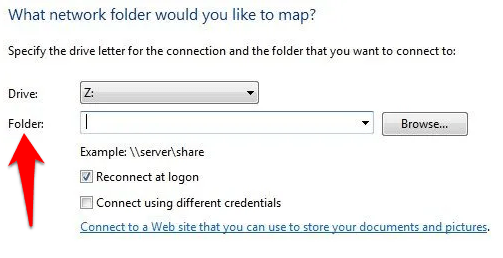- How to Map a Network Drive in Windows
- How To Map a Network Drive On Windows 10
- Using File Explorer to Map Network Drive Windows 10
- Using Command Prompt to Map a Network Drive Windows 10
- How To Map a Network Drive On Windows 7, 8 & XP
- How to map FTP drives, network drives, and web shares, in Windows 10
- How to map a network drive in Windows 10
- How to map an FTP drive in Windows 10
- Did mapping drives and FTP in File Explorer work like you wanted to?
How to Map a Network Drive in Windows
Tips for Windows XP, Vista, 7, 8, 10 and even via the command prompt
A mapped drive is a shortcut to the specific drive on a different device that enables you to access resources shared on a local network, or files on a FTP server or website.
It looks just like the shortcut on your local hard drive with its own letter, even opening as though it were on the drive, but the files are physically stored on a different computer or device altogether.
Mapping is different from mounting a drive as it allows you to open remote files as though they were stored on your own computer, while mounting allows you to open a file as if it were a folder.
The main limitation with using a mapped network drive is that it depends on a working network, so if it’s down, or the connection isn’t working properly, you can’t access the files in the mapped drive.
How To Map a Network Drive On Windows 10
We’ll show you two ways of mapping a network drive in Windows 10: Using File Explorer and using Command Prompt.
Using File Explorer to Map Network Drive Windows 10
- Connect your network drive to your router.
- Click Start on the taskbar and select Settings>Network & Internet.
- Go to Change AdvancedSharing options.
- Click Turn on network discovery.
- Click Save changes. If the Save Changes button is grayed out, it means Network Discovery is already enabled, so you can ignore this step.
- Next, open File Explorer by pressing the Windows logo key+E.
- Click This PC and go to the Computer tab. Alternatively, search for This PC with Cortana.
- In the main window, check the letters for each drive you see and note them down so that you don’t create duplicate ones. Avoid using letters C, D and F as these are usually assigned to the local storage and removable media like USB drives and discs. This also ensures you don’t encounter complications down the line.
- Click the Map Network Drive button (helps you connect to a new remote resource on the network).
- Select a Drive letter in the drive list, and search for the network drive. To navigate to the drive itself, click Browse in the popup menu.
Note: If this is your first network drive, you’ll see one on the drive list. If you have several network drives, you’ll see several of them when you click the Browse button.
- In the Folder box, type the folder or computer path, or click Browse to find it.
- Select Reconnect at sign-in to connect each time you log into your computer. It ensures the mapped drive is available to you every time, but if you don’t want this, uncheck the box.
- Find the shared folder in the drive or create a new one, where you can drop files into for access from any location. To create a folder, right-click New Folder, and give it a name you can remember when you need to find it on a different device.
- If you need to access the shared network folder using credentials for a different account, tick Connect using different credentials.
- You’ll get a prompt to enter the shared network login information i.e. username and password of the computer you want to connect to. Use a password you can remember in case other colleagues or family members need to use it.
Note: If your NAS device has a username and password, you may need to enter it to access the drive.
- Click Finish. You’ll see a new window for the drive denoted by the drive letter you assigned earlier. It’ll also display the shared folders, from which you can view and open files on the network drive.
Note: If you’re unable to map a network folder or drive, check whether the computer you’re trying to connect to is turned off, or check whether you have the correct permissions. You can also check with your network administrator.
You’ll see the network drive listed on the sidebar in File Explorer under This PC. From here, you can open it and drag files such as documents, media or others to it. You can also copy/cut and paste as you would with other files and folders.
When you’re done with the mapped drive and don’t need it anymore, just right-click on it and select Disconnect.
Using Command Prompt to Map a Network Drive Windows 10
An advanced way of working with a mapped drive in Windows is by using the net use command in Windows, or in PowerShell if you prefer.
- Click Start and type CMD in the search bar.
- Click Open under Command Prompt.
- In the Command Prompt window, type net use DRIVE: PATH and press Enter. (DRIVE represents the drive letter you’ll use and PATH represents the UNC path for sharing. So it would look something like: net use g: \\tower\entertainment
- You can add your username and password to the command if the share you’re connecting to is protected with a password or other authentication and you don’t want to keep typing the credentials each time you open the network drive.
For example, if our username is OTT and password is bringthatbeatback, the command will look something like: net use g: \\tower\entertainment /user:OTT bringthatbeatback
- When you restart your computer, the mapped drive may disappear, as they’re not persistent by default. In this case, you can add the /persistent switch to make sure they stick around.
To create a persistent connection, type /persistent:Yes so future connections made using this command will be persistent until you turn it off using the /persistent:No toggle.
- To delete the mapped network drive in command prompt, specify the drive letter and add/delete switch as follows: net use DRIVE: /delete. For example, we used drive letter g, so you’ll type the command net use g: /delete
How To Map a Network Drive On Windows 7, 8 & XP
Microsoft stopped supporting Windows 7 as of January 2020, but you can upgrade to Windows 10 so you can get regular security updates and tech support.
- Mapping a network drive in these older Windows versions is simpler. On the Start menu or desktop, click Computer and then select Map network drive.
- Select the drive letter for the network drive you want to map. In the Folder field, enter the UNC path and then click Finish. Windows XP has several different methods to map a network drive, but the above steps use Windows Explorer to map the drive.
Were you able to map your network drive using the steps we’ve covered in this guide? Tell us in a comment below.
Elsie is a technology writer and editor with a special focus on Windows, Android and iOS. She writes about software, electronics and other tech subjects, her ultimate goal being to help people out with useful solutions to their daily tech issues in a simple, straightforward and unbiased style. She has a BCom degree in Marketing and currently pursuing her Masters in Communications and New Media. Read Elsie’s Full Bio
How to map FTP drives, network drives, and web shares, in Windows 10
When you work in a network with multiple computers and network shares, mapping a network drive so that you can access it from File Explorer can be useful. Similarly, if you need to work with FTP locations, mapping them as network drives in File Explorer might be just what you need to be more productive. If you want to know how to map an FTP drive, a network drive, or a web share in Windows 10, read this tutorial:
NOTE: This guide applies to Windows 10 and should work the same in Windows 8.1. If you’re still using Windows 7, check this guide instead: How to map network drives, websites and FTP locations in Windows 7. Also, if you’ve come across this article while searching for ways to delete mapped network drives instead of creating ones, read 4 ways to delete mapped network drives in Windows 10.
How to map a network drive in Windows 10
Mapping a network drive is quite useful if you often need to access a shared network drive or folder. When you do that, the mapped network drive is assigned a letter, and you can see and work with it directly from File Explorer. The first step to map a network drive is to open File Explorer. Inside its window, click or tap on This PC in the navigation pane from the left.
Next, open the Computer tab on the ribbon, and press the “Map network drive” button.
In the Map Network Drive wizard, choose the letter that you want to use for mapping the network drive. Then, if you know the path to the network folder to which you want to connect to, type it in the Folder field.
If you do not know the path to the network share, press Browse and navigate through the available network locations until you find the folder that you want to map as a network drive. Select it and press OK.
Check the option “Reconnect at sign-in” to ensure that the mapped network drive is permanent on your Windows 10 computer or device.
If you need to use credentials (username and password) from the networked computer to access the shared folder, check “Connect using different credentials” and then click or tap Finish.
If you choose to connect using different credentials, you must enter them during the next step. Windows 10 might have already selected a user account for you. If that’s the one you want, enter the password, check “Remember my credentials” to avoid inserting them every time you access this mapped network drive, and click or tap OK.
If you want to use a different user account, click or tap on More choices, select “Use a different account” and enter both the username and password of the user account that you prefer using. Then choose whether you want Windows 10 to “Remember [your] credentials” and press OK.
If everything worked according to your plan, Windows 10 connects to the mapped network drive and opens in a matter of seconds.
To access the mapped network drive later, return to File Explorer, go to This PC, and then check the list of available Network locations.
How to map an FTP drive in Windows 10
If you want to connect to map an FTP drive or other types of network locations such as a web share, you need to use a different wizard to get the job done.
In File Explorer, click or tap on This PC in the navigation pane on the left side of the window. Then, open the Computer tab from the ribbon, and click or tap on the “Add a network location” button.
On the first step of the “Add Network Location” wizard, read the information it shares and press Next.
Select “Choose a custom network location” and click or tap Next.
Enter the address for your desired network location in the “Internet or network address” text field. If you want to map an FTP drive, you should type something like ftp://ftp.domain.com. If you need to add a web share from a web server, type something like http://server_name_or_address/share. Once you have completed this step, click or tap Next.
You are asked whether you need to specify a username and password to access the FTP drive that you want to add. If you do not, leave the “Log on anonymously” checkmark enabled. Otherwise, uncheck it and enter the username. Click or tap Next to move on.
Enter a name for the FTP drive and press Next.
Choose whether you want to open the new FTP drive mapping as soon as the wizard ends. Then, press Finish.
The newly mapped FTP drive is now added to File Explorer, and you can find it the Network locations list.
To access a mapped FTP drive, double-click (or double-tap) on its name. Depending on how it is set up, you may need to enter a username and password to access its content. If credentials are required, you should see a pop-up requesting your account password: type it and select “Save password” to avoid entering it every time. Then, click or tap “Log on.”
Did mapping drives and FTP in File Explorer work like you wanted to?
As you can see, it takes little time to map network drives, FTP, or other locations to your Windows PC or device. Once you are done, you can browse to these locations from File Explorer to add or access files, and you can easily save new files to these remote locations. It is convenient once done correctly. We’d like Windows 10 to allow us to map FTP drives and assign letters to them, just like we can do for network drives. Don’t you also think that’s a great idea? Use the comments below to tell us what you think.

